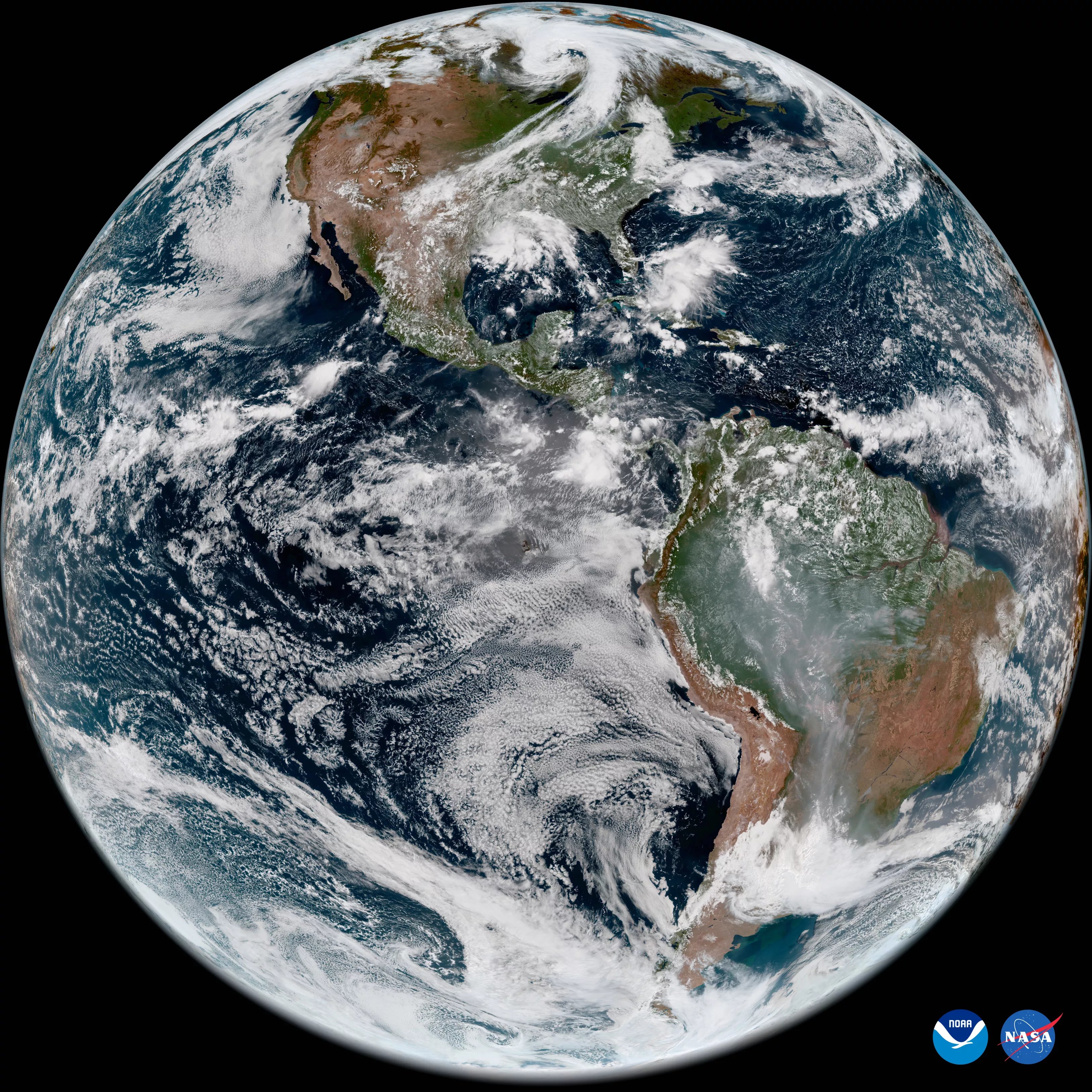On Sept. 18, 2024, NOAA shared the first images of the Western Hemisphere from its GOES-19 satellite. The satellite’s Advanced Baseline Imager (ABI) instrument recently captured stunning views of Earth.
GOES-19, NOAA’s newest geostationary satellite, launched on June 25, 2024, onboard a Falcon Heavy rocket from NASA’s Kennedy Space Center. Previously known as GOES-U, the satellite was renamed GOES-19 upon reaching geostationary orbit on July 7, 2024.
GOES-19 orbits 22,236 miles above the equator at the same speed the Earth rotates. This allows the satellite to constantly view the same area of the planet and track weather conditions and hazards as they happen.
The ABI, GOES-19’s primary instrument, views Earth with sixteen different channels, each measuring energy at different wavelengths along the electromagnetic spectrum to obtain information about Earth’s atmosphere, land, and ocean.
This GOES-19 image shows the contiguous United States observed by each of the ABI’s 16 channels on Aug. 30, 2024. This 16-panel image shows the ABI’s two visible, four near-infrared and 10 infrared channels. The visible and near-IR bands are gray-colored, while the infrared bands have the warmer brightness temperatures mapped to warmer colors. The different appearance of each band is due to how each band reflects or absorbs radiation. Each spectral band was scanned at approximately the same time, starting at 18:00 UTC.
The ABI provides high-resolution imagery and atmospheric measurements for short-term forecasts and severe weather warnings. ABI data is also used for detecting and monitoring environmental hazards such as wildfires, smoke, dust storms, volcanic eruptions, turbulence and fog.
Data from multiple ABI channels can be combined to create imagery that approximates what the human eye would see from space—a result known as GeoColor.

GOES-19 full disk GeoColor image from Aug. 30, 2024. This type of imagery combines data from multiple ABI channels to approximate what the human eye would see from space.
Recently, GOES-19 observed a number of weather events, environmental phenomena and striking views of our planet. Wildfires in the Midwest and the Amazon blanketed nearby areas with smoke. Storms flared up over the Southeast and a low pressure system over Canada brought severe weather. Tropical Storm Francine formed in the Gulf of Mexico and quickly developed into a hurricane, making landfall in Louisiana. GOES-19 also captured mesmerizing von Kármán vortices around Guadalupe island, cloud streets over Virginia, and cumulus clouds over the Midwest.
GOES-19 is currently undergoing post-launch testing, which includes validation and calibration of its instruments, systems and data to prepare it for operations. NOAA plans for GOES-19 to replace GOES-16 as GOES-East in April 2025.
GOES-19 is the final satellite in NOAA’s heralded GOES-R Series and serves as a bridge to a new age of advanced satellite technology. NOAA and NASA are currently developing NOAA’s next generation geostationary satellites, called Geostationary Extended Observations (GeoXO). The GeoXO satellite system will advance Earth observations from geostationary orbit. The mission will supply vital information to address major environmental challenges of the future in support of weather, ocean and climate operations in the United States. The advanced capabilities from GeoXO will help assess our changing planet and the evolving needs of the nation’s data users. NOAA and NASA are working to ensure GeoXO’s critical observations are in place by the early 2030s when the GOES-R Series nears the end of its operational lifetime.
Imagery from GOES-19 during the post-launch testing phase should be considered preliminary and non-operational.
